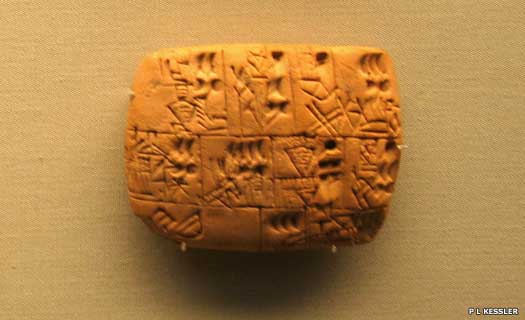
| QATTARA / KARANA Qattara emerged as a small state in the northern Mesopotamian plain in the nineteenth century BC. Its eponymous capital city is thought to have been located at modern Tell Rimah (60km west of Mosul), but there is a chance this site may have been Karana instead, as the state incorporated both the cities of Qattara and Karana. Tell Rimah has been occupied since prehistory, but to date its earliest levels have not been searched, with the first excavation of the higher layers only dating to 1964.
The Amorite Numha population which controlled the city in the first half of the second millennium BC seems to have been related to that of Ekallatum to the south-east, while to the west they were neighboured by the Yamutbal, and Ninevah was not far away to the north-east. As was common with many of the small city states of northern Mesopotamia in this period, the kings of Qattara maintained close ties with Zimri-Lim of Mari, and the city was probably the fourth stage on the trade route from Ashur to Kanesh.
c.1809 - 1776 BC :
Qattara
is conquered by Shamshi-Adad and is incorporated into the kingdom
of Upper Mesopotamia. Its ruler, Hatnu-rabi, is retained as a vassal
until the collapse of the kingdom and the re-establishment of much
of the previous order in northern Mesopotamia. Hatnu-rabi immediately
loses the city of Karana to Asqur-Addu.
fl c.1780 BC :
Hatnu-rabi / Hadnu rabi : Vassal of Upper Mesopotamia. Later ally of Zimri-Lim of Mari.
Upon the death of Hatnu-rabi, Asqur-Addu of Karana extends his control to include Qattara, reuniting the kingdom. He hands over the day-to-day control of Qattara to his own man, a military leader and soothsayer by the name of Aqba-Hammu. This new governor is also given the hand of Asqur-Addu's sister, Iltani, in marriage. At this time, the city is protected by a bulwark of 600 metres in diameter. At the centre of the enclosure is a sacred area which is the city's main temple, and is probably dedicated to Ishtar. Its facade is decorated with mud bricks which reproduce the appearance of palm tree trunks (as at the temple of contemporary Apum).
Sumerian script remained the Latin of ancient Mesopotamia long after the fall of Sumerian civilisation itself. This tablet contains a record of beer Asqur-Addu / Ashkur-Addu : King of Karana.
Aqba-Hammu : Governor and then king of Qattara.
Not
content with governing Qattara, Aqba-Hammu seizes the throne of
Karana, forcing the king to flee.
Iltani : Wife. Sister of Asqur-Addu. Queen of Qattara & Karana.
Iltani is referred to as queen of Qattara in an Old Babylonian letter (part of the 'Iltana Archives') which is addressed to her, and mention is made of the fact that she had previously lived in exile in Eshnunna.
c.1762 BC :
Qattara's
brief period of independence is ended when Hammurabi of Babylon
occupies northern Mesopotamia. Aqba-Hammu remains on the throne
for a time, a vassal to Hammurabi, but after the latter's death
in c.1750 BC, the region slowly declines. The city is apparently
never again worthy of note, and its history down to the mid-Assyrian
period is known only through archaeology.
c.1350 BC :
As the power of Mitanni fails, Assyria gains control over the city.c.1200 BC
Assyria loses its foothold in the region in the face of regional attacks, particularly by Aramaeans. The city is abandoned at some point around this time, probably due to those attacks.
8th century BC :
The
city is partially re-occupied and is known as Zamahe within the
province of Rasapa during the Neo-Assyrian Period. It becomes an
important regional centre.
fl c.800 BC :
Nergal-Eresh : Governor under Assyrian rule (Adad-Nirari III).
c.600 BC :
Following the collapse of the Assyrian empire, the city loses all importance and is eventually abandoned.
Source :
https://www.historyfiles.co.uk/ |
